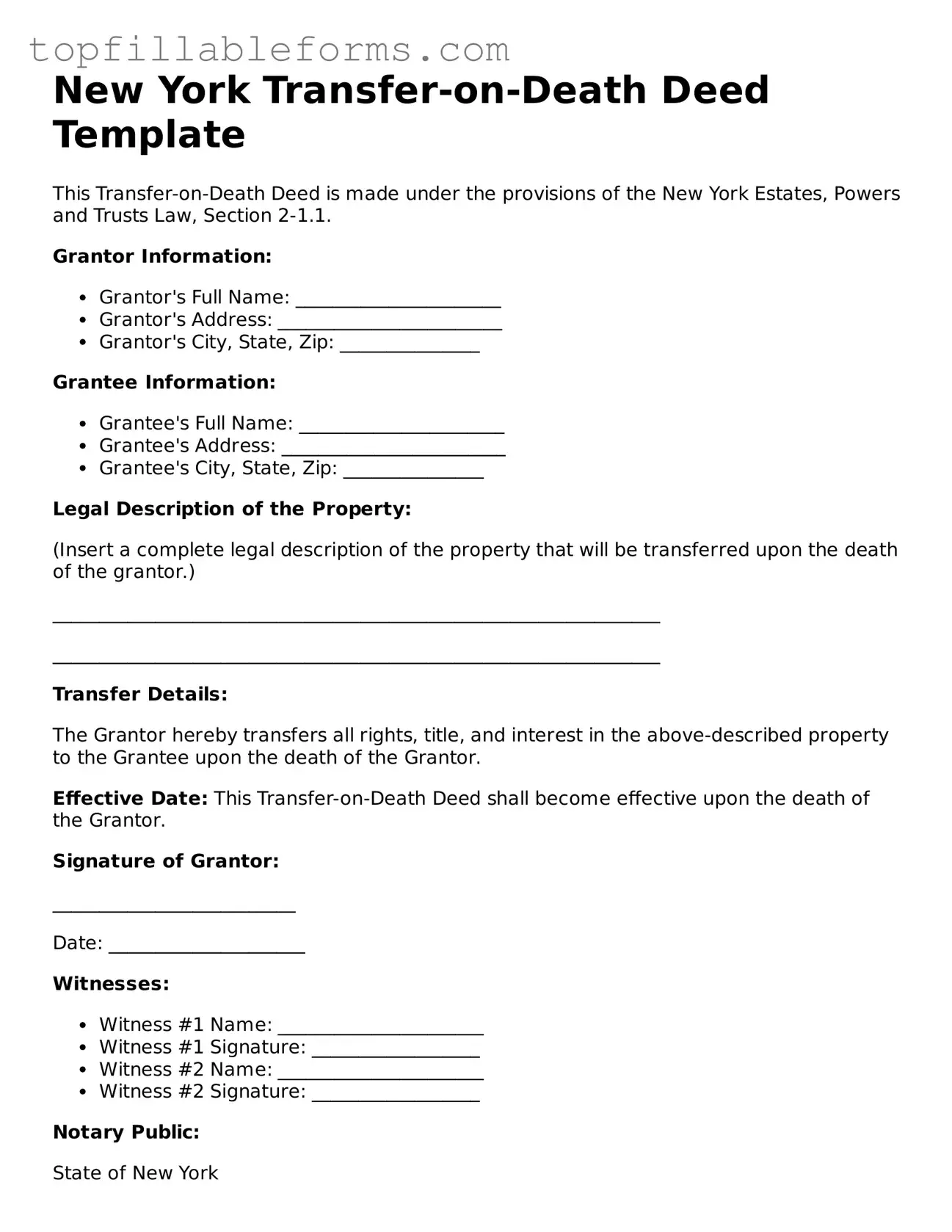New York Transfer-on-Death Deed Template
This Transfer-on-Death Deed is made under the provisions of the New York Estates, Powers and Trusts Law, Section 2-1.1.
Grantor Information:
- Grantor's Full Name: ______________________
- Grantor's Address: ________________________
- Grantor's City, State, Zip: _______________
Grantee Information:
- Grantee's Full Name: ______________________
- Grantee's Address: ________________________
- Grantee's City, State, Zip: _______________
Legal Description of the Property:
(Insert a complete legal description of the property that will be transferred upon the death of the grantor.)
_________________________________________________________________
_________________________________________________________________
Transfer Details:
The Grantor hereby transfers all rights, title, and interest in the above-described property to the Grantee upon the death of the Grantor.
Effective Date: This Transfer-on-Death Deed shall become effective upon the death of the Grantor.
Signature of Grantor:
__________________________
Date: _____________________
Witnesses:
- Witness #1 Name: ______________________
- Witness #1 Signature: __________________
- Witness #2 Name: ______________________
- Witness #2 Signature: __________________
Notary Public:
State of New York
County of _______________________
On this _____ day of ______________, 20___, before me appeared ______________________, known to me to be the person whose name is subscribed to this instrument, and acknowledged that he/she executed the same.
__________________________
Notary Public Signature
